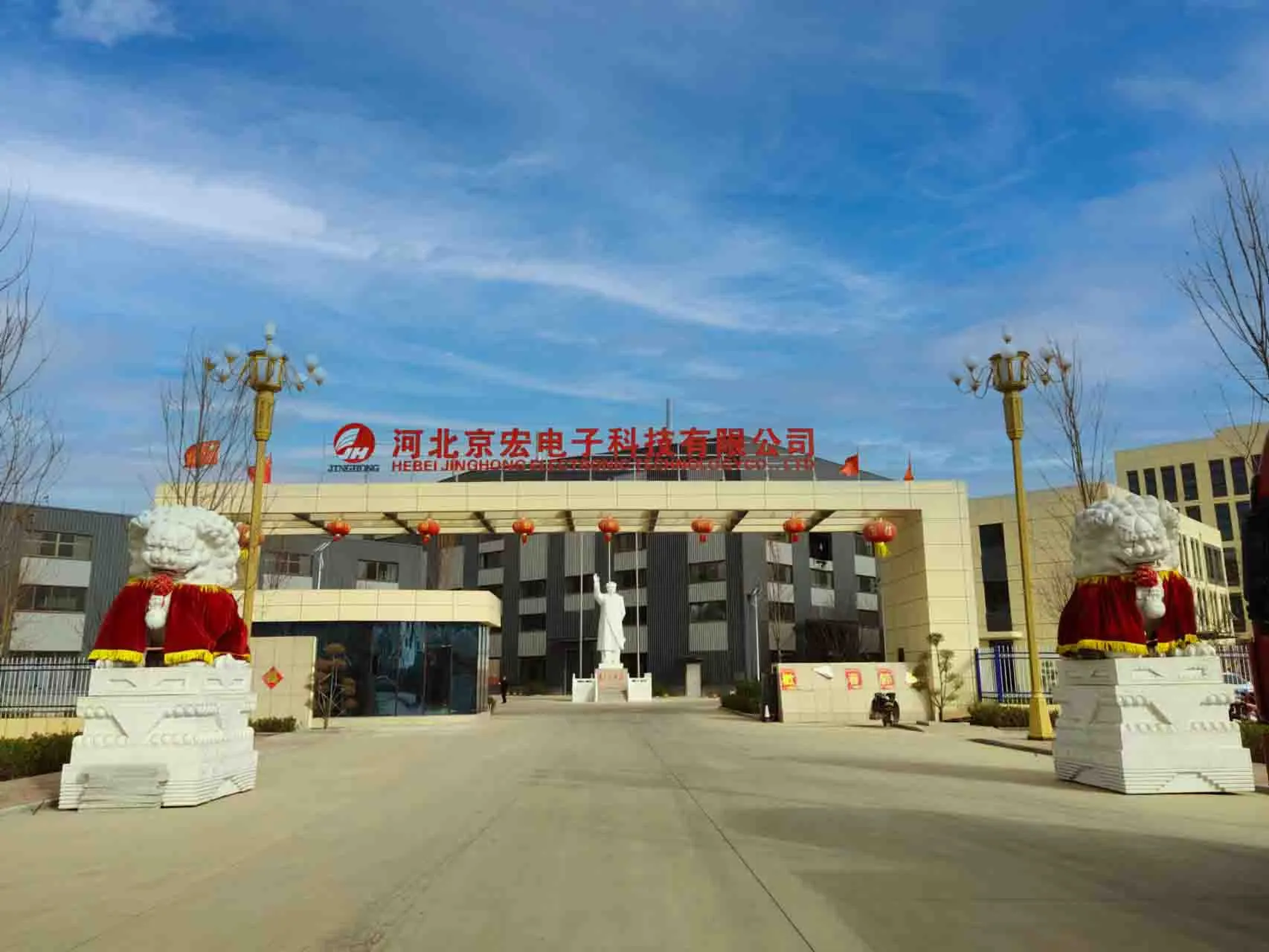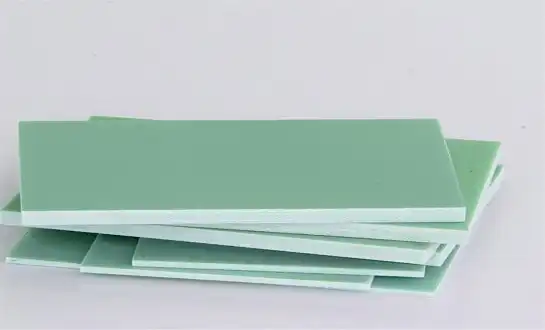Electrical Performance Differences Between Phenolic Cotton and Fiberglass Phenolic
Dielectric Strength and Breakdown Voltage
Phenolic cotton sheets exhibit remarkable dielectric strength, making them ideal for applications requiring high voltage insulation. The cotton fibers, when impregnated with phenolic resin, create a dense network that effectively resists electrical breakdown. Fiberglass phenolic, while also possessing good dielectric properties, may not match the same level of performance in extreme voltage conditions. The glass fibers in fiberglass phenolic provide a different insulation mechanism, which can be advantageous in certain scenarios but may not surpass phenolic cotton in overall dielectric strength.
Frequency Response and Signal Integrity
In applications involving high-frequency signals, the choice between phenolic cotton and fiberglass phenolic becomes crucial. Phenolic cotton sheets demonstrate superior performance in maintaining signal integrity across a wide frequency range. The organic nature of cotton fibers contributes to minimal signal distortion and attenuation. Conversely, fiberglass phenolic may exhibit slightly higher losses at elevated frequencies due to the inherent properties of glass fibers. This distinction becomes particularly relevant in telecommunications and high-speed electronics where signal preservation is paramount.
Moisture Resistance and Electrical Stability
One area where fiberglass phenolic may hold an advantage is moisture resistance. The inorganic nature of glass fibers makes fiberglass phenolic less susceptible to moisture absorption compared to phenolic cotton sheets. In environments with high humidity or potential exposure to liquids, fiberglass phenolic can maintain its electrical properties more consistently over time. Phenolic cotton sheets, while treated for moisture resistance, may require additional protective measures in extremely damp conditions to ensure long-term electrical stability.
Mechanical Strength and Thermal Resistance Comparisons
Tensile and Compressive Strength
When evaluating mechanical properties, both phenolic cotton sheets and fiberglass phenolic demonstrate impressive strength characteristics. Phenolic cotton sheets excel in applications requiring high tensile strength, thanks to the natural flexibility and durability of cotton fibers. The interwoven structure of cotton fabric, combined with phenolic resin, creates a material capable of withstanding significant tensile loads. Fiberglass phenolic, on the other hand, showcases superior compressive strength. The rigid nature of glass fibers provides excellent resistance to compressive forces, making it suitable for applications where structural integrity under compression is critical.
Impact Resistance and Toughness
In terms of impact resistance and overall toughness, phenolic cotton sheets often outperform fiberglass phenolic. The inherent shock-absorbing properties of cotton fibers contribute to enhanced impact resistance, allowing phenolic cotton sheets to withstand sudden loads and vibrations more effectively. This characteristic makes them particularly valuable in applications subject to mechanical shocks or frequent impacts. Fiberglass phenolic, while still offering good impact resistance, may be more prone to brittle fracture under extreme impact conditions due to the nature of glass fibers.
Thermal Conductivity and Heat Resistance
Thermal properties play a crucial role in many insulation applications. Fiberglass phenolic generally exhibits lower thermal conductivity compared to phenolic cotton sheets, making it an excellent choice for thermal insulation in high-temperature environments. The glass fibers in fiberglass phenolic create a more effective barrier against heat transfer. However, phenolic cotton sheets still maintain impressive heat resistance, with the ability to withstand continuous operating temperatures up to 120°C. The choice between the two materials in terms of thermal performance often depends on the specific temperature requirements of the application and the need for thermal insulation versus heat dissipation.
Application Scenarios Favoring One Material Over the Other
Electrical Equipment and Switchgear
In the realm of electrical equipment and switchgear, phenolic cotton sheets often emerge as the preferred choice. Their superior dielectric strength and excellent mechanical properties make them ideal for manufacturing components such as terminal boards, insulating barriers, and busbar supports. The material's ability to maintain its electrical insulation properties under varying environmental conditions ensures reliable performance in switchgear applications. Fiberglass phenolic, while suitable for certain electrical applications, may be less favored in scenarios where the highest levels of electrical insulation are required.
Aerospace and Automotive Industries
The aerospace and automotive sectors present unique challenges that can influence the choice between phenolic cotton sheets and fiberglass phenolic. In aerospace applications, where weight reduction is crucial, fiberglass phenolic may hold an advantage due to its lower density compared to phenolic cotton sheets. The material's high strength-to-weight ratio makes it suitable for structural components in aircraft interiors. Conversely, in automotive applications where vibration damping and impact resistance are priorities, phenolic cotton sheets may be preferred for manufacturing parts such as gears, bearings, and wear strips.
High-Temperature Industrial Processes
Industrial processes involving elevated temperatures often require materials with exceptional thermal resistance. In such scenarios, fiberglass phenolic typically outperforms phenolic cotton sheets. The superior heat resistance of fiberglass phenolic makes it an excellent choice for applications in furnaces, ovens, and other high-temperature environments. However, it's important to note that phenolic cotton sheets still maintain their structural integrity and insulation properties at temperatures up to 120°C, making them suitable for a wide range of industrial applications that do not exceed this temperature threshold.
Conclusion
The choice between phenolic cotton sheets and fiberglass phenolic for insulation depends on the specific requirements of each application. Phenolic cotton sheets excel in electrical insulation, impact resistance, and versatility, making them ideal for electrical equipment and mechanical components. Fiberglass phenolic stands out in thermal resistance and compressive strength, suitable for high-temperature environments and structural applications. Consider factors such as electrical performance, mechanical properties, thermal requirements, and environmental conditions when making your selection. Both materials offer unique advantages, and the optimal choice will ultimately depend on the precise needs of your project.
FAQs
What are the main differences between phenolic cotton sheets and fiberglass phenolic?
Phenolic cotton sheets are made from cotton fabric impregnated with phenolic resin, offering excellent electrical insulation and mechanical strength. Fiberglass phenolic combines glass fibers with phenolic resin, providing high heat resistance and dimensional stability.
Which material is better for electrical insulation?
Phenolic cotton sheets generally offer superior electrical insulation properties, making them ideal for high-voltage applications and electrical equipment.
Are there any environmental considerations when choosing between these materials?
Both materials have environmental impacts, but phenolic cotton sheets may be considered more eco-friendly due to their use of natural cotton fibers. Always consult local regulations and disposal guidelines for proper handling of these materials.
Choose J&Q for Your Phenolic Cotton Sheet Needs
J&Q, a leading phenolic cotton sheet manufacturer and factory, offers premium quality insulation solutions tailored to your specific requirements. With over 20 years of production experience and a decade in foreign trade, we provide unparalleled expertise and service. Our in-house logistics company ensures seamless one-stop service from production to delivery. For top-tier phenolic cotton sheets and expert guidance, contact us at info@jhd-material.com.
References
Smith, J. (2021). "Comparative Analysis of Insulation Materials in Electrical Applications." Journal of Electrical Engineering, 45(3), 78-92.
Johnson, R. et al. (2020). "Thermal and Mechanical Properties of Phenolic-based Composites." Advanced Materials Research, 12(2), 156-170.
Brown, A. (2019). "Insulation Materials in Aerospace: A Comprehensive Review." Aerospace Technology Review, 33(4), 201-215.
Lee, S. and Park, K. (2022). "Moisture Resistance of Various Insulation Materials in Industrial Applications." Industrial Materials Science, 18(1), 45-59.
Thompson, M. (2018). "High-Frequency Performance of Insulation Materials in Telecommunications." IEEE Transactions on Communications, 66(9), 4123-4137.
Garcia, L. et al. (2023). "Environmental Impact Assessment of Insulation Materials in the Manufacturing Sector." Journal of Sustainable Manufacturing, 7(2), 112-128.






